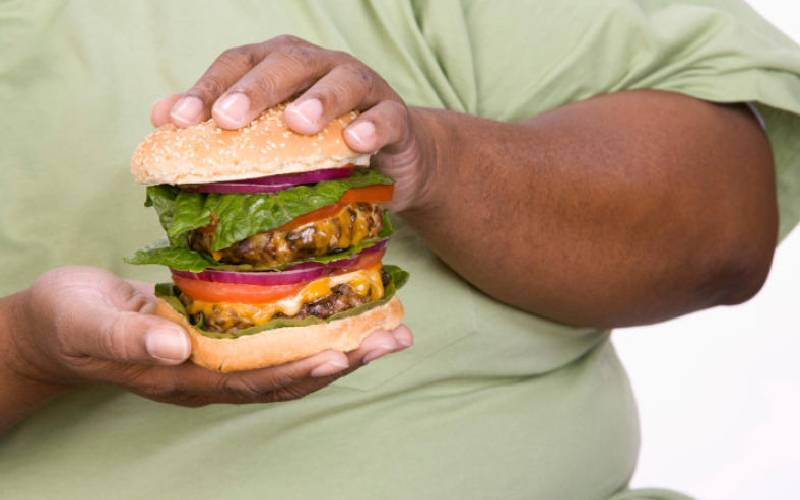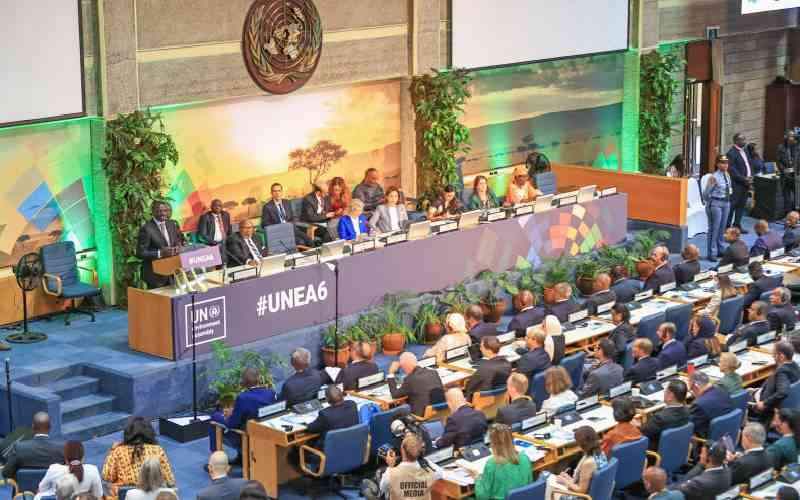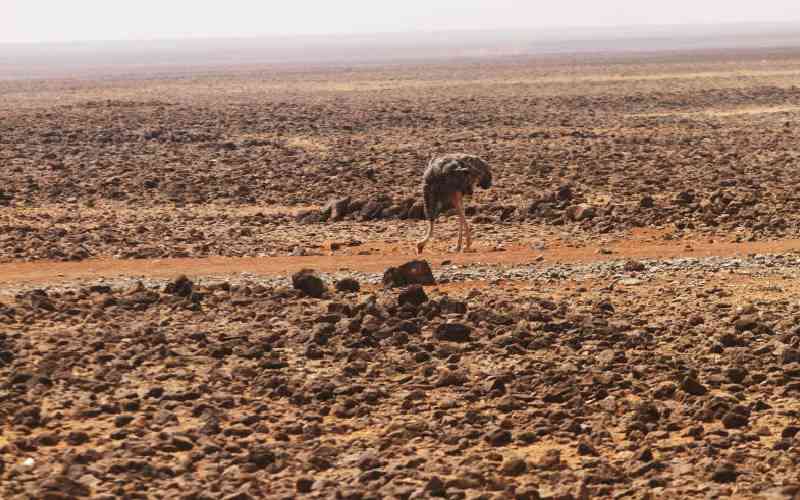Lifestyle diseases like hypertension and diabetes are costing ten per cent of Kenyans their kidneys. Children born with some congenital anomalies affecting the kidney at times find themselves in need of a new kidney.
When you walk into the Moi Teaching and Referral Hospital’s (MTRH) Majaliwa operating theatres, one of them is named Adamba Theatre. On face value, it is another name to identify one of the many theatres that have saved lives of different people from different walks of life.
Jotham Adamba, once a nurse at the hospital, was the first ever person to undergo a kidney transplant from the facility 14 years ago. Many had dissuaded him and his donor against going under the knife in the then virgin field, in a hospital whose track record with such major surgery was unknown.
His younger brother Mark, working at Pan Paper at the time was advised not to give up one of his kidney because “how was he going to live with one kidney, if at all he survives the surgery?”
The brothers look back, one happy to have shared part of his self to give his older brother a second chance at life.
Jotham had been diagnosed with diabetes and hypertension in 1991, but in 2004, his kidneys failed and he needed dialysis.
“I had a swollen and itchy body,” he says, “and I had turned black. I hardly had any urine.”
For two years, he was on dialysis once a week as an immediate solution. Being in Eldoret, dialysis was a bit challenging as sometimes they had to wait for supplies from Nairobi. Kidney specialists recommend that planning a way out of dialysis for anyone with end-stage kidney disease should be started as soon as the diagnosis is made.
“Dialysis takes a long time and resources,” Jotham says adding that one can hardly do any other productive thing when they are scheduled for dialysis. It involves travelling logistics to the dialysis centre, at least 4 hours on the machine, a process that wears out many kidney patients.
Jotham’s plans for kidney transplant began as soon as he was started on dialysis. Luckily, his brother was a perfect match. The transplant cost the family 700,000 shillings, which they raised through well-wishers and his workmates.
While the transplant was successful and the brothers did not have any complications, the real challenge of post-transplant care began.
“Getting the medicines that I needed for my body not to reject the new kidney was difficult then. They cost me about 60,000 shillings a month though now that cost has come down to almost 20,000,” he says. This includes insulin and his blood pressure medication.
Dr. Philip Chepting’a, the Head of Renal Services at MTRH explains that early detection of kidney disease and ensuring its slow progression is important. Once one has end-stage kidney disease, they have one of two options; either dialysis or a kidney transplant.
“We do one to two transplants per week, but we could do more.” He says.
In the last 10 years. The hospital has done 127 successful kidney transplants. In 2019 alone, in seven different hospitals across the country including KNH and MTRH, 163 kidney transplants were done, according to the Kenya Renal Association.
The biggest challenge however for the kidney specialists is not whether the transplants can be done but whether the recipient of the kidney transplant can maintain the kidney and avoid rejection through the life-long medicines (immunosuppressants) that they need.
These medicines, pacify the body’s immune system, limiting its reaction to a new organ and therefore reducing chances that it will be rejected. These drugs are required for as long as the new kidney remains viable and in use. They are a key component in keeping the newly transplanted kidney alive.
“The average costs of the immunosuppressants is 30,000 to 40,000 shillings per month,” Dr. John Ngigi, the Head of the Renal Unit at KNH says. Compared with 76,000 shillings monthly for dialysis, the kidney specialists are of the opinion that transplants would be financially sound for most patients in addition to giving one his or her independence as a productive member of society.
The cost of immunosuppressants for an average middle-class household with an income of 100,000 shilling is prohibitive and unsustainable.
This is an opinion that NHIF concurs with, according to an internal NHIF report, which The Nairobian got a copy of. Currently the National Hospital Insurance Fund (NHIF) covers the actual transplant surgery costs both for the donor and the recipient, but that is where it ends.
“Of the 400 or so kidney transplants that we have done as country in the last ten years, only less than 15% will have complications,” Dr. Ngigi explains, adding that this risk of complications is not unique to Kenya but can occur anywhere in the world.
“NHIF covers up to 130,000 for the donor and 500,000 for the kidney recipient,” Dr. Chepting’a explains. “This is enough for the surgery costs and admission up to five to seven days after that, for both.”
These NHIF funds however do not cover the pre-transplant preparation and tests, some which are not done in the country, and may cost up to 200,000 shillings. Add the costs of the post-transplant care and medicines to that and this is an uphill task for many a Kenyans who would then prefer dialysis on the basis of costs covered.
The report by NHIF states that, “While the NHIF’s decision to support patients in defraying the upfront costs of surgery is commendable, the subsequent failure to cater for the long-term costs of immunosuppressant drugs reveals an irrational approach in their transplant programme.”
The report further states that an exit plan for dialysis should be planned, and that is transplantation. If a transplant cannot be done, patients will be on dialysis for lifetime.
“My life has continued normally,” says Jotham as he opens his hardware shop at Cheptulu in Nandi County. “I am able to go about my activities to raise money to support my family.”
Transplant recipients who for reasons of cost fail to keep up with their medications risk losing the transplanted kidney once it fails.
in public hospitals, even the average middle-class household with an average income of Sh100,000 would find it difficult to afford this long-term treatment.
The retired nurse goes about his daily businesses and farming without any indication that he ever had a kidney transplant. His brother Mark runs a welding business in the same shopping centre. His huge scar at the bottom right of his abdomen is the only evidence that his spare kidney is the engine that gave his brother hope and his independence back.
The gains accrued from NHIF catering for kidney transplant costs can be erased as long as the crucial medicines required by the transplant recipient to keep the kidney viable are not readily accessible and available.
“Considering the prevailing market rates, our analyses demonstrate that the costs of Akinyi’s renal transplant including her medicines are lower than Chebet’s dialysis over the first five years who must also get a transplant at the end of this period. Compared to Akinyi, Chebet will also have to make at least two visits every week to the dialysis centre taking time away from work and other meaningful life activities. The case for transplant against dialysis is settled.” The report concludes.
According to the NHIF report, dialysis gives one an extra five years of a healthy kidney-life while a kidney transplant can give one at least 12 years of a healthy and productive life.
— Additional Reporting by Edward Kosut
 The Standard Group Plc is a multi-media organization with investments in media
platforms spanning newspaper print
operations, television, radio broadcasting, digital and online services. The
Standard Group is recognized as a
leading multi-media house in Kenya with a key influence in matters of national
and international interest.
The Standard Group Plc is a multi-media organization with investments in media
platforms spanning newspaper print
operations, television, radio broadcasting, digital and online services. The
Standard Group is recognized as a
leading multi-media house in Kenya with a key influence in matters of national
and international interest.











